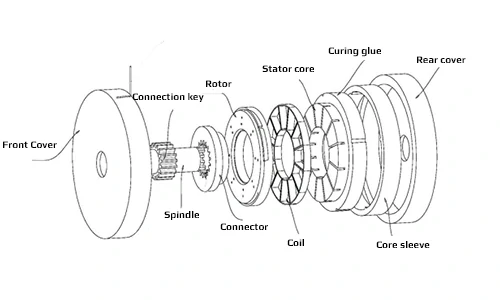The stator-rotor air gap is an important parameter of the generator, which can provide an effective reference for mechanical structure design and generator operation. The air gap is a rotating space formed between the rotor and the stator, which is defined by the specifications of the generator parts and mechanical structure equipment. According to the different parameters such as rotor and stator materials, structure and size used in the design and manufacturing process of the generator, a reasonable manufacturing process can be adopted to make the stator-rotor air gap meet the standards of the generator design requirements.
The process of formulating the stator-rotor air gap
1. Design of rotor, stator, support and positioning parts.
2. Evaluate the performance of the generator by measuring the stator-rotor air gap.
3. Adjust the stator-rotor air gap to ensure that it meets the design requirements of the generator.
Methods for measuring the stator-rotor air gap
1. Measuring the stator-rotor air gap with a micrometer:
It is very simple to measure the stator-rotor air gap with a micrometer. As long as the micrometer is placed between the stator and the rotor, the size of the stator-rotor air gap can be accurately measured.
2. Use a steel ruler to measure the stator-rotor air gap:
The accuracy of measuring the stator-rotor air gap with a steel ruler is higher than that of using a micrometer, which can help determine the exact value of the stator-rotor air gap
3. Use an electronic vernier to measure the stator-rotor air gap:
The accuracy of measuring the stator-rotor air gap with an electronic vernier can reach 0.01 mm, which is incomparable to micrometers and steel rulers. It can accurately measure the size of the stator-rotor air gap, so it is the best choice for measuring the stator-rotor air gap of the generator.

Adjustment method of stator-rotor air gap
The stator and rotor air gap is an important parameter in generator design, and it is subject to extremely high requirements. The control requirements for the stator and rotor air gap are mainly the following:
1. The accuracy of the stator and rotor air gap must meet the design requirements.
2. The stator and rotor air gap must be stable and reliable.
3. The noise caused by the air gap must be less than the design value.
4. The air gap should not be disturbed by the outside world during operation.
5. The stator and rotor air gap should not damage the mechanical structure of the generator.
The stator and rotor air gap of the generator is the key to the design and manufacture of the generator. Only by controlling the accuracy of the stator and rotor air gap during the design and manufacturing process can the normal operation of the generator be ensured.


